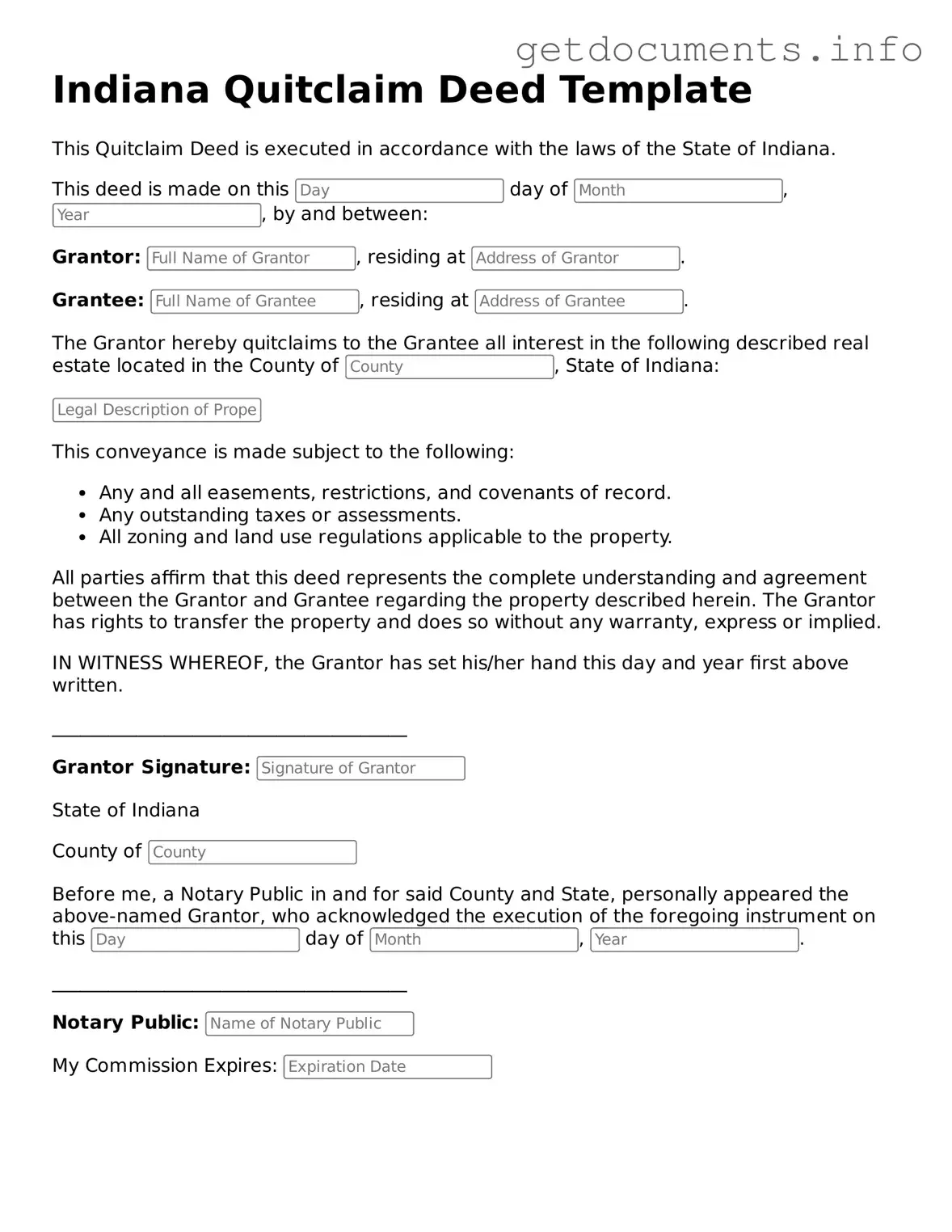Free Quitclaim Deed Template for Indiana
A Quitclaim Deed is a legal document used in Indiana to transfer ownership of real property from one party to another without any warranties regarding the property’s title. This form allows the grantor to relinquish their interest in the property, providing a straightforward way to convey ownership. Understanding the Quitclaim Deed is essential for anyone involved in property transactions in Indiana.
To fill out the form, click the button below.
Access Quitclaim Deed Editor
